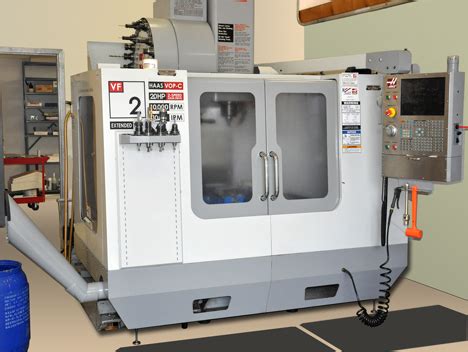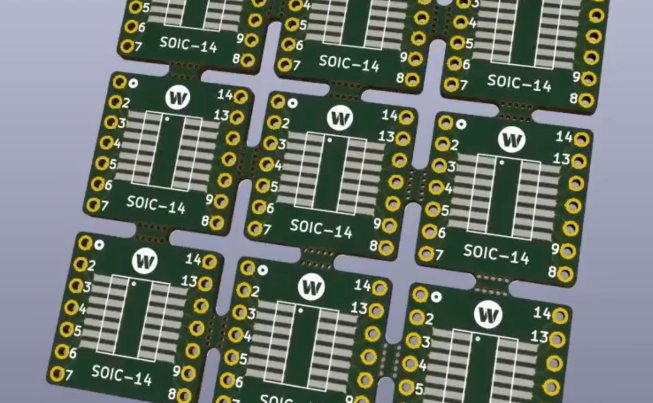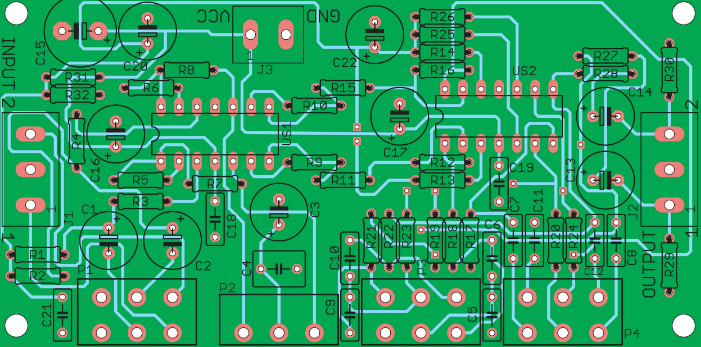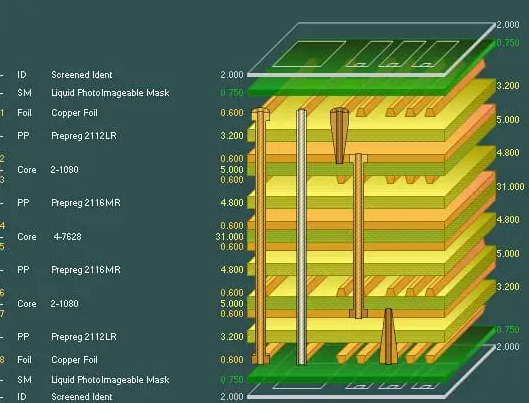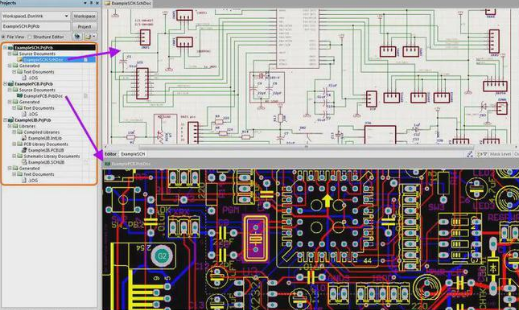Revolutionizing Technology: The Future of Circuit Card Assembly
Key Takeaways
As technology continues to evolve, pcb assembly processes are experiencing transformative innovations that promise to enhance efficiency and productivity. The rise of pcba techniques is marked by sophisticated automation, which not only streamlines production workflows but also minimizes human error. This integration of advanced robotics and AI-driven systems is fostering a new era where precision is paramount. Moreover, manufacturers are increasingly adopting sustainable practices within the circuit card assembly landscape, recognizing the importance of environmental responsibility alongside technological advancement. These changes are paving the way for a future where adaptability and efficiency reign supreme, ensuring that circuit card assembly remains a cornerstone of modern manufacturing. As we look ahead, understanding these trends will be crucial for stakeholders aiming to remain competitive in an evolving technological ecosystem.
Introduction to Circuit Card Assembly: An Overview
Circuit card assembly (CCA) plays a pivotal role in the tech industry, serving as the foundation for electronic devices. The process involves assembling various electronic components onto a printed circuit board (PCB), transforming a simple board into a complex assembly known as PCBA. Understanding the circuit card assembly process is essential for grasping how devices function and maintain efficiency in modern technology. As innovation drives the industry, manufacturers are exploring cutting-edge techniques to optimize pcb assembly. This includes advancements such as precision soldering and the utilization of automated systems to enhance production speed and accuracy. Furthermore, technological improvements in component placement and inspection have significantly reduced errors, contributing to higher overall reliability in pcba processes. The significance of efficient CCA cannot be overstated, as it directly influences not only the performance but also the sustainability of electronic devices, making it an indispensable aspect of modern manufacturing practices that continues to evolve rapidly.
Key Innovations Shaping the Future of Circuit Card Assembly
As the field of circuit card assembly (commonly referred to as pcb assembly or pcba) continues to evolve, several key innovations are driving its future. One significant advancement is the integration of advanced materials that enhance durability and performance. These new materials often allow for thinner, lighter designs without compromising reliability, which is crucial in today’s technology-driven landscape.
Moreover, 3D printing technology is gaining traction in the production of circuit boards, enabling rapid prototyping and reducing lead times significantly. This innovation allows manufacturers to explore complex geometries that were previously unattainable with traditional techniques, facilitating bespoke solutions for unique application requirements.
Table 1 below summarizes some of these crucial innovations:
| Innovation | Description |
|---|---|
| Advanced Materials | Use of lightweight and durable materials for better performance in electric environments |
| 3D Printing | Allows for rapid prototyping and complex shapes in pcb assembly, enhancing customization |
| Automation | Streamlines processes and reduces human error in pcba, promoting efficiency |
Furthermore, the role of automation cannot be overlooked. Automated systems are increasingly employed to handle repetitive tasks in the production line, which not only boosts efficiency but also significantly lowers costs associated with labor. By combining these technologies, manufacturers can achieve a level of precision that maximizes performance while minimizing waste.
These advancements signal a transformative period for circuit card assembly where not only are operational efficiencies being realized but also new opportunities for innovation are opening up across various sectors from consumer electronics to aerospace applications. As such, staying attuned to these developments is vital for organizations aiming to maintain a competitive edge in an ever-evolving technology landscape.
Emerging Techniques in Circuit Card Manufacturing
In the constantly evolving landscape of pcb assembly, innovative techniques are emerging that significantly enhance both the efficiency and effectiveness of the process. One notable advancement is the implementation of automated optical inspection (AOI) systems, which enable manufacturers to detect defects at an unprecedented speed and accuracy, thereby reducing manual errors associated with traditional inspection methods. Additionally, advancements in materials, such as the use of flexible substrates and high-density interconnects (HDI), are pushing the boundaries of what is achievable in pcba design. These materials not only improve performance but also facilitate more compact and lightweight circuit designs, making them ideal for a range of applications from consumer electronics to aerospace. Furthermore, the integration of additive manufacturing techniques in circuit card assembly offers exciting possibilities for rapid prototyping and custom part fabrication, which can significantly shorten production cycles. As industries continue to demand greater precision and miniaturization, adopting these emerging techniques will be critical for staying competitive and meeting market expectations in this dynamic field. The continual evolution of practices within pcb assembly ensures that only the most efficient methods are utilized, paving the way for a more advanced future in circuit card manufacturing.
Enhancing Efficiency in Circuit Card Assembly Processes
In the rapidly evolving field of pcb assembly, enhancing efficiency is a crucial aspect of maintaining competitive edge and meeting the growing demands of technology. Circuit card assembly processes are undergoing significant transformations thanks to emerging technologies that streamline operations and reduce turnaround times. Among these innovations, the integration of automation technology stands out as a key player. Automated systems can perform tasks with high precision, minimizing human error and increasing output volume, which is essential for high-demand applications.
Furthermore, advancements in materials science are leading to the development of more efficient and durable components. The advent of flexible printed circuit boards (FPCBs) allows for innovative designs that maximize space utilization while maintaining performance reliability. This flexibility can notably reduce the complexity and cost associated with pcba manufacturing.
To achieve peak efficiency in circuit card assembly, companies are also investing in predictive maintenance systems. These utilize data analytics to foresee equipment failures before they occur, thus reducing downtime and enhancing overall productivity. It’s important for manufacturers to adopt a holistic approach that embraces digital transformation while focusing on improving operational workflows.
“The future of circuit card assembly lies in our ability to blend traditional methods with cutting-edge technologies,” says industry expert Anna Stevenson.
As these enhancements take root, companies that prioritize sustainable practices alongside technological advancements will not only gain efficiency but also bolster their reputation in a market increasingly focused on eco-friendly solutions. By embracing these trends, the industry can ensure that pcb assembly continues to meet both current needs and future demands efficiently and sustainably.
The Role of Automation in Revolutionizing Circuit Card Assembly
The integration of automation in circuit card assembly (also known as pcba) has become a game-changer in the manufacturing sector. By employing advanced robotics and automated systems, companies can achieve remarkable increases in production speed and precision. The consistency offered by automation minimizes human error, enabling manufacturers to produce reliable pcb assembly results that meet stringent quality standards. Furthermore, automation allows for the seamless scaling of production volumes, accommodating both high-mix low-volume and high-volume manufacturing needs efficiently. As technologies evolve, integrating artificial intelligence and machine learning into the automation process is set to enhance not only the effectiveness of circuit card assembly but also its adaptability to changing market demands. With these advancements, manufacturers can optimize their workflows and significantly reduce operational costs, making automation an indispensable element in the future of pcba. This continuous evolution will play a vital role in shaping a more efficient and sustainable manufacturing landscape, paving the way for innovations that enhance the overall efficacy of electronic components used across various industries.
Sustainable Practices in Circuit Card Manufacturing
The landscape of pcb assembly is evolving, with a significant emphasis placed on sustainability within the industry. As the demand for pcba increases, manufacturers are exploring eco-friendly materials and processes to reduce their environmental footprint. This shift involves adopting lead-free solder and recyclable substrates, which minimize harmful emissions and waste during production. Furthermore, companies are increasingly implementing energy-efficient technologies in their manufacturing facilities, aiming to lower energy consumption and greenhouse gas emissions. The integration of closed-loop systems also plays a vital role, allowing manufacturers to recycle materials effectively, thereby contributing to a more sustainable supply chain. By embracing these sustainable practices, the circuit card assembly sector not only addresses the urgent need for environmental stewardship but also positions itself as a forward-thinking industry that appeals to socially conscious consumers and partners alike. As advancements continue, the future of circuit card manufacturing is set to reflect an increased commitment to sustainability while maintaining high standards of quality and efficiency in pcb assembly processes.
Future Trends: What’s Next for Circuit Card Assembly?
As the landscape of pcb assembly continues to evolve, several key trends are emerging that promise to shape the future of this critical manufacturing process. Firstly, the integration of advanced materials is expected to enhance the performance and durability of various pcba applications. Innovations such as flexible circuit boards are gaining traction, enabling manufacturers to develop thinner, lighter devices that meet modern consumer demands. Furthermore, digital technologies are playing an integral role in streamlining production processes. The implementation of predictive analytics and machine learning can optimize supply chains and reduce lead times significantly.
Another vital trend is the increased adoption of automation in circuit card assembly operations, which not only enhances efficiency but also improves precision in assembly processes. Automated systems can reduce human errors and enable rapid scaling of production without compromising quality. Additionally, sustainability is becoming a core focus in circuit card manufacturing; companies are exploring eco-friendly materials and practices to minimize their environmental footprint while adhering to regulatory requirements.
As these trends unfold, the future of pcb assembly looks promising, fostering an environment ripe for innovation, enhanced efficiency, and sustainability that will ultimately benefit both manufacturers and consumers alike.
Conclusion: The Impact of Advancements on the Tech Landscape
The advancements in pcb assembly technology are set to change the dynamics of the tech landscape significantly. As industries increasingly rely on pcba, manufacturers are embracing innovative techniques that not only improve production efficiency but also enhance overall product quality. These advancements pave the way for customizations that were once considered impractical, allowing for greater flexibility in design and application. The integration of automation is further streamlining circuit card assembly processes, reducing errors, and minimizing lead times. Moreover, sustainable practices are being prioritized, demonstrating that responsibility can coexist with progress. As we move forward, it will be essential to observe how these trends evolve, potentially leading to novel applications that will redefine what we consider possible within the realm of electrical engineering and manufacturing. Embracing these developments positions companies to remain competitive and responsive to changing market demands while contributing positively to environmental sustainability efforts.
Conclusion: The Impact of Advancements on the Tech Landscape
The landscape of circuit card assembly (commonly referred to as pcba) is evolving at a remarkable pace. As we have explored throughout this article, the advancements in technology are leading to revolutionary changes in pcb assembly processes. These innovations are not only enhancing efficiency but also improving the overall quality of electronic products. The integration of automation into circuit card assembly is making it possible to achieve higher precision while reducing production time and costs, effectively reshaping how manufacturers approach this critical manufacturing process. Furthermore, sustainable practices are becoming increasingly significant, allowing companies to minimize their environmental footprint while maintaining output quality. Looking ahead, the future appears bright for pcba, as emerging techniques promise to drive further improvements and adaptability in an ever-evolving tech landscape. The impact of these advancements will resonate across various sectors, fueling growth and paving the way for exciting possibilities in electronic manufacturing.
FAQs
What is pcb assembly?
Pcb assembly, or pcba, refers to the process of assembling electronic components onto a printed circuit board (PCB). This process is crucial for creating functional electronic devices and plays a significant role in modern technological advancements.
What are the key components involved in the pcba process?
The main components of pcb assembly include resistors, capacitors, integrated circuits, and other electronic parts. Each component is meticulously placed on the PCB to ensure the proper functioning of the entire circuit.
How have innovations improved circuit card assembly techniques?
Innovations such as automated placement machines and advanced testing methods have significantly enhanced the quality and efficiency of pcb assembly, reducing errors and improving production speed.
What role does automation play in pcba?
Automation is essential in pcba, as it streamlines various processes from component placement to soldering. This not only boosts productivity but also enhances accuracy, minimizing manual error.
Why is sustainability important in circuit card manufacturing?
Sustainable practices in pcba minimize waste and reduce the environmental impact associated with electronic manufacturing. Emphasizing recycling and eco-friendly materials contributes to a healthier planet.

